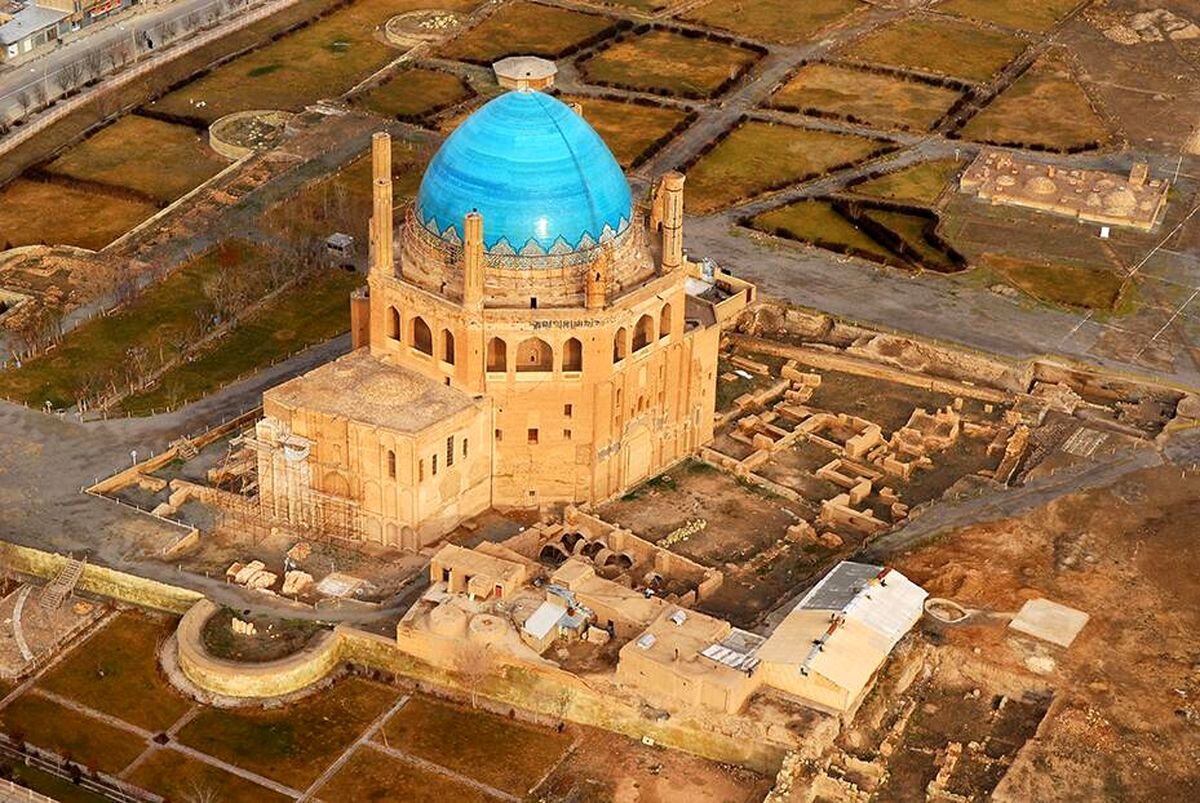Exploration of historical Soltaniyeh Dome continues

TEHRAN—Abolfazl Ali, Director of the Soltaniyeh World Heritage Base, gave news of continuation of the new excavation season in the area of Abvab al-Bar with the aim of identifying the Ilkhanid architectures and rereading the historical structures.
He told ISNA that based on the historical texts, Oljaytu, the eighth Ilkhanid Mongol ruler, built a mausoleum for himself concurrent with construction of new capital of Ilkhanid government in Soltaniyeh. It is known as Soltaniyeh Dome, he added.
Imitating his brother, Ghazan Khan, in Tabriz, and upon the advice of Iranian ministers, Oljaytu established a series of public buildings called Abvab al-Bar next to this dome and within the citadel.
Referring to the historical sources, he added: “Abvab al-Bar consisted of 19 buildings with different functions that provided services to the residents of the capital and travelers in the form of a charitable foundation with a specific administrative structure and independent budget. However, detailed information about the location of these buildings and their architectural structure is not mentioned in the historical texts, and this has provided an incentive for new excavations.”
Stating that the Soltaniyeh World Heritage Base has started explorations in eastern and western sides of the dome, he said that in this phase, the concentration is on defining the precincts of the dome, the entrances and how this complex is connected to the other parts of the historical Soltaniyeh Citadel.
According to Ali, in continuation of the research, considering the previous findings in the 1970s by Dr. Ganjavi, as well as the excavations in the 1980s and 1990s led by Dr. Mirfattah on the eastern side of the dome, another goal of this season of excavation is to recognize and make legible the works and results of the past excavations.
He added: “In this season of excavations, significant results were obtained on the western side of the dome, and some of the spaces adjacent to the dome belonging to the Ilkhanid period, along with works from subsequent periods, have been identified.”
Constructed between 1302 and 1312 under the rule of Oljaytu, the Dome of Soltaniyeh is located in Zanjan province and is regarded as a landmark of Persian and Islamic architecture. The octagonal mausoleum features a 50-meter-tall turquoise-blue faience dome – the earliest known example of a double-shelled dome in Iran – flanked by eight slender minarets.
Its elaborate interior decoration has drawn praise from historians, with noted scholar Arthur Upham Pope describing it as “anticipating the Taj Mahal” in grandeur and vision.
According to UNESCO, the Mausoleum of Oljaytu is an essential link and key monument in the development of Islamic architecture in central and western Asia. Here, the Ilkhanids further developed ideas that had been advanced during the classical Seljuk phase (11th to early 13th centuries), during which the arts of Iran gained distinction in the Islamic world, thereby setting the stage for the Timurid period (late 14th to 15th centuries), one of the most brilliant periods in Islamic art. Particularly relevant are the mausoleum dome’s double-shell structure (an inside shell and an outside shell), and the materials and themes used in its interior decoration.
KD
Leave a Comment